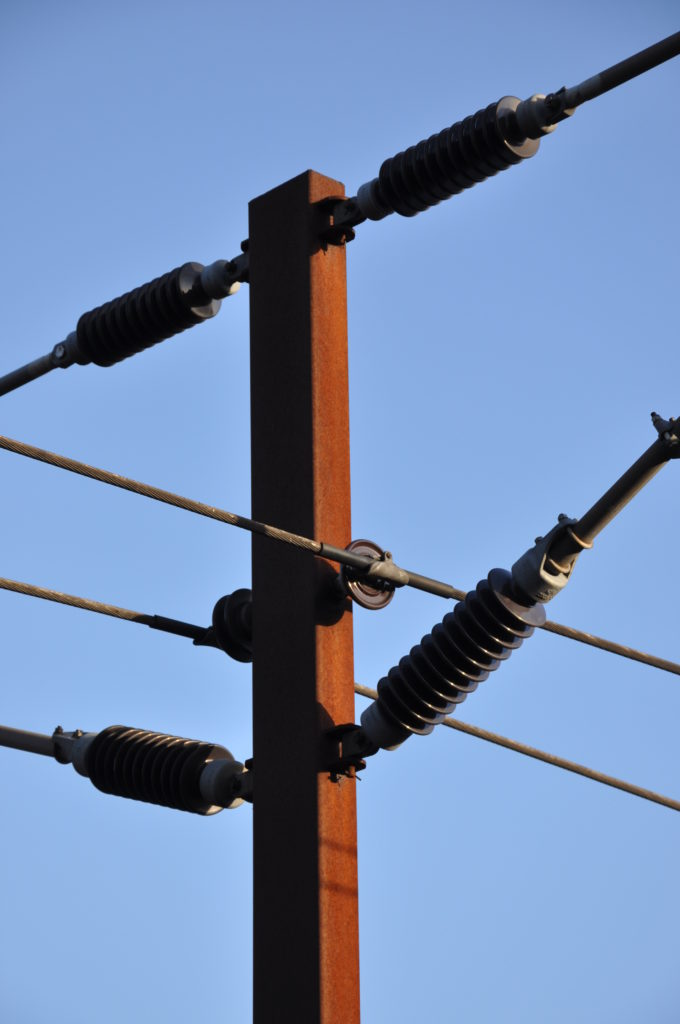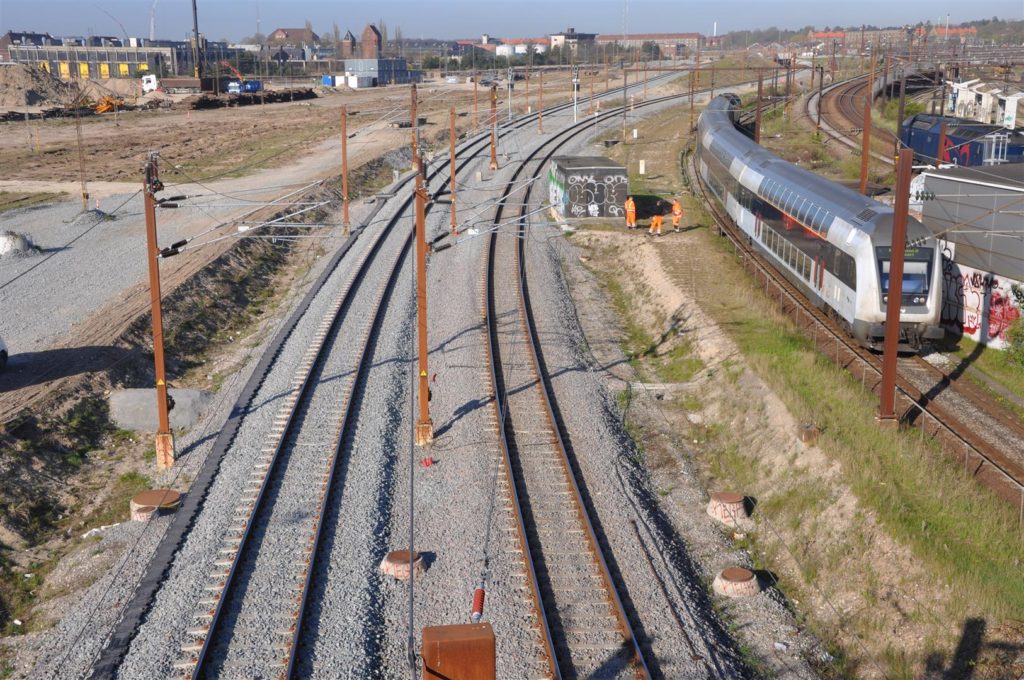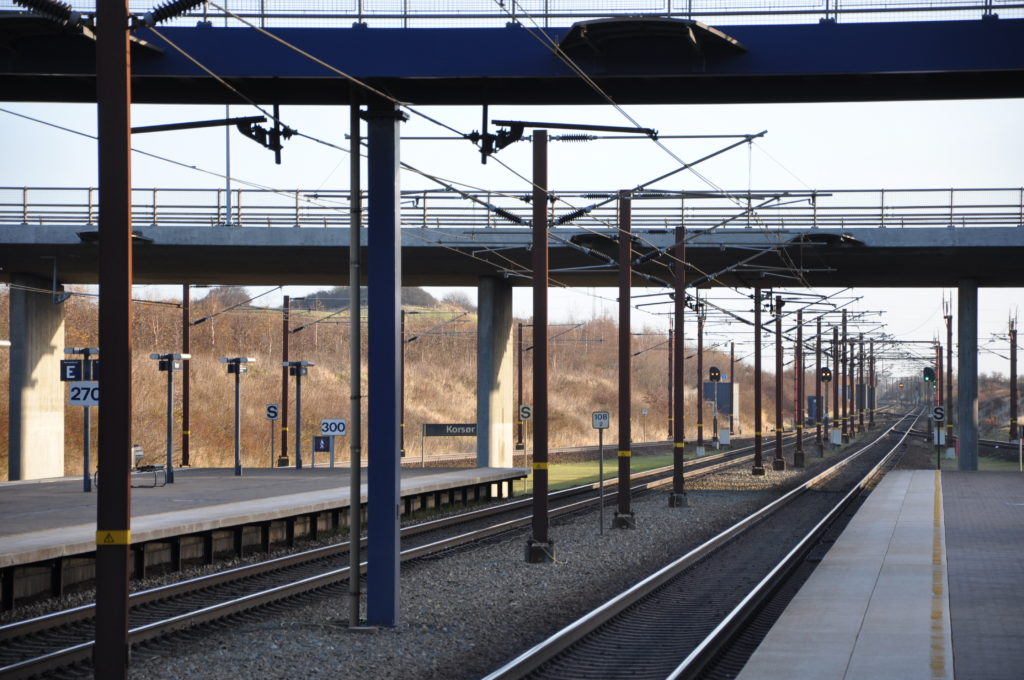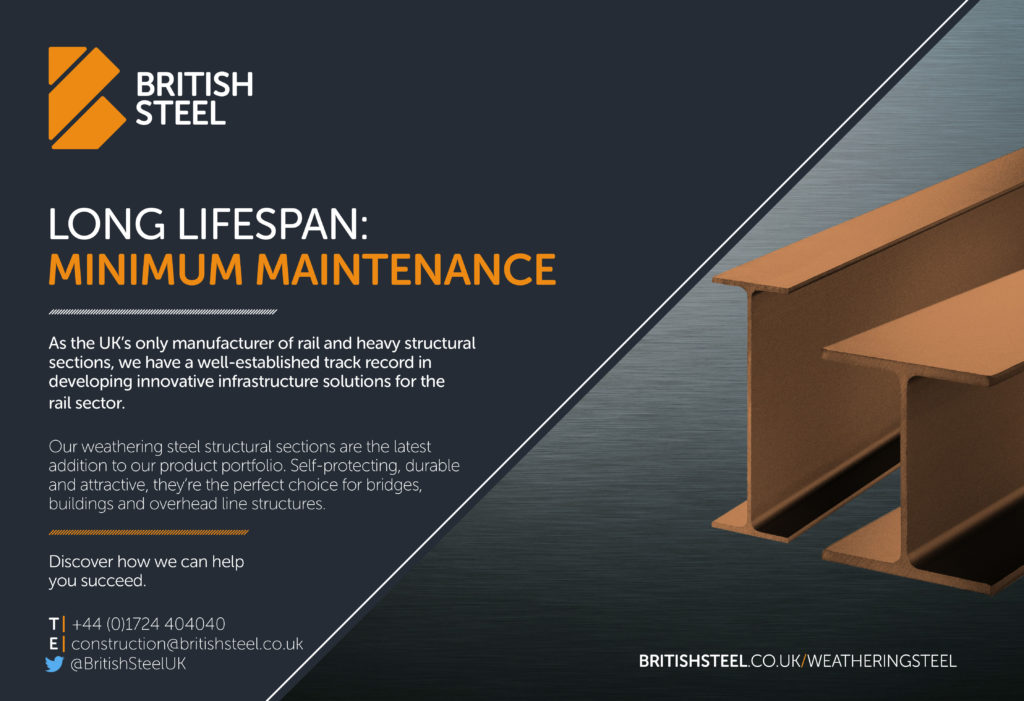A recent article published in Rail Engineer detailed the designs of the new viaducts that are planned for the HS2 project. It was stated that the new slimmer designs have been achieved by the combined use of cast reinforced concrete deck sections with the use of weathering steel rolled sections. The intended message was environmental, based on how the new composite structures have been slimmed down from conventional designs to blend unobtrusively into the landscape of the many areas of outstanding natural beauty that the HS2 route passes through.

The article sparked my interest in revisiting research work I conducted eight years ago into the use of weathering steels within the wider rail industry. At that time a number of bridges had been fabricated from it but, I believed, the obvious choice for its use had to be the lineside masts and structures of the Overhead Line Equipment (OLE). My research revealed that weathering steel was being used for OLE structures in Europe. Not only had it been used successfully on previous electrification projects by the Danish Railway Network (DSB), but work had started on new electrification schemes involving 550 km of lines.
So, why is it that HS2 advocates the use of weathering steel for bridges and viaducts, but does not consider its use for OLE masts and structures? Or, indeed, other lineside fixtures?
Political environment
Sustainability and efficiency are key concerns for the European rail industry, particularly in the current financial and political climate, and considering the environmental issues raised by global warming. With the cost of living high on the agenda, the challenges that governments face in sustaining investment are: (i) securing value for money; (ii) improving operational and environmental performance; (iii) including providing better customer information; and (iv) engagement with local communities.
To drive down operating costs and improve efficiency, Network Rail and HS2 are actively advocating innovation as a way to make gains in whole life costing, and global warming has led Network Rail to implement a 15-year decarbonisation initiative. The wider use of weathered steel on the network would aid these efforts.
The standard practice for manufacturing masts and structures for OLE involves hot dip galvanising, in which standard mild steel rolled sections are immersed in molten zinc to provide an anti-corrosive layer. However, the many advantages of weathering steel make it a viable alternative to hot dip galvanising in the right environment and application.
The anticorrosive properties of weather-resistant steels are better than those of other structural steels and there are clear economic reasons for using them in many applications, especially when, at the project stage, the total costs over the life cycle of the structures are considered. The enhanced resistance of weathering steels is based on the ‘self-healing’ oxide layer. This corrosion-retarding effect is produced by the way in which alloying elements are distributed and concentrated. The oxide layer develops and regenerates continuously when subjected to the effects of the weather, protecting the surface. Essentially, the superficial rusting of the steel forms the protective oxide layer.

Cost benefits
Employing weather-resistant steel in steel structures removes the need for costly surface treatment processes.Prime examples of its use are for shipbuilding, offshore architecture, bridges, and works of art. In the case of the latter, Antony Gormley’s ‘Angel of The North’ at Gateshead is a good structural example of its use.
Manufacturing load bearing structures from weathering steel is essentially no different or more costly than with equivalent mild steel, and procedures related to selecting the correct welding consumables and techniques to match the parent metal are now well known throughout industry. By using this method, based on my own research, railways can make substantial capital and operating cost savings. Hot dip galvanising can account for 20% of the total manufacturing cost of typical mast designs.
But weathering steel doesn’t just bring the user initial and whole-life cost benefits specific to the material. Because no further processing is required, it also reduces the overall construction time. Plus, once in situ, the minimal maintenance requirements of weathering steel structures greatly reduce both the direct costs of maintenance operations, and the indirect costs of traffic delays or rail possessions. Furthermore, environmental issues associated with volatile organic compounds (VOCs) from paint and the disposal of blast-cleaning debris from future maintenance work are avoided.
Technical environment
During my previous research into the supply and comparative manufacturing costs between weathering and mild steels, I had been told by steel stockholders that weathering steel could only be provided in sheet form. One international steel manufacturer explained that the lack of rolled sections was down to lack of demand, but there was no reason why weathering steel could not be produced as standard rolled sections by the rolling mills. I was also told that the smelting process would need to be changed due to the different alloying elements, adding a hypothetical ‘mark-up’ of over 15% per tonne dependent on the sections required. In addition, they said that a minimum order of 1,000 tonnes had to be guaranteed.
The picture today is different. British Steel produces a wide range of rolled steel sections. The new weathering steel sections match the design requirements of those used for the manufacturing of existing galvanised masts and structures. In fact, British Steel has developed a very flexible manufacturing process, and the engineers are more than prepared to work in partnership with clients to develop new ideas and design solutions. This client engagement has a high potential to develop viable bespoke designs, or modified sections to meet the client needs. Regarding the previous minimum order of 1,000 tonnes, the new flexible manufacturing process is designed for small batch production, with a minimum order of 20 tonnes.

Technical and operational issues have been addressed with the assistance of rail engineers from Denmark who have first-hand experience of the design, installation and in-service performance of weathering steel masts. Danish State Railways (DSB) and Rail Net Denmark specifications require that OLE masts and structures can remain in service for 50 years. DSB also asserts that OLE designs are aesthetically appropriate for the landscape in which they are placed. Architects and design engineers collaborated closely and selected weathering steel for masts and structures. The architects came up with an innovative solution to mitigate the felling of line-side trees by careful linear adjustment of the masts and structures.
This strategy, helped by the neutral reddish brown oxide layer of the steel, has resulted in a design that complements the Danish landscape. So, why not in the beautiful English landscapes?
Geographical factors
We must also consider atmospheric conditions. A research paper entitled: ‘Modelling of sea salt concentrations over Europe: key uncertainties and comparison with observations.’ published in the international scientific journal ‘Atmospheric Chemistry and Physics’ shows that Great Britain and Denmark have similar atmospheric concentrations of sodium. Technical literature mentions that weathering steel can be vulnerable in salt-laden environments where the oxide layer can become unstable and susceptible to undesired corrosion.
What is not mentioned is the fact that the land area of Denmark consists of a long narrow peninsula and a number of islands, and many of the rail routes follow the coastlines. The UK, however, has a large, wide land area, with most rail routes being inland. This is especially true of HS2 where the route runs centrally through the country.
New information from a recently published international scientific research paper, the subject of which is corrosion of metals, indicates that weathering steel structures are not subject to adverse salt laden atmospheric conditions if they are located at a minimum five kilometres from coasts. It did warn, however, that the design must eliminate water traps, the use of clamps, and must allow for the ventilation of all surfaces. This is considered an essential design detail comparable to that of avoiding closed spaces/volumes in hot-dip galvanised designs. However, that was from experience with masts fabricated from formed sheet steel sections. The use of the newly available rolled steel sections will eliminate many of the water trap areas.
An open mind
As a rough estimate, 5,000 tonnes of steel would be required to make all the OLE masts and structures required for the whole HS2 project – though this assessment was made before the announced curtailment of the Leeds leg, which reduces the requirements.
My research demonstrates that the use of weathering steel in the manufacture of OLE masts, structures and other lineside fixtures on the HS2 line is financially viable, has minimal design considerations and is both environmentally and aesthetically beneficial. Environmentalists, rail infrastructure designers, administrators and members of government should therefore look closely at this research with an open mind for the benefits to be gained.
The existing HS2 project is now firmly under way, but it is not too late for amendments to be made that will allow the use of this cost saving and environmentally friendly solution. Perhaps the Transpennine route, through the beautiful UNESCO European and Global Geopark, could also benefit?
Thanks go to: Mr Gordon Hodgson, Commercial Manager, British Steel. Mr Mike Beeson, Technical Planning Manager, British Steel. Mr Niels Thougard Pedersen, Trailc-Denmark – Technical information and photographs.
Author: Martin Young


